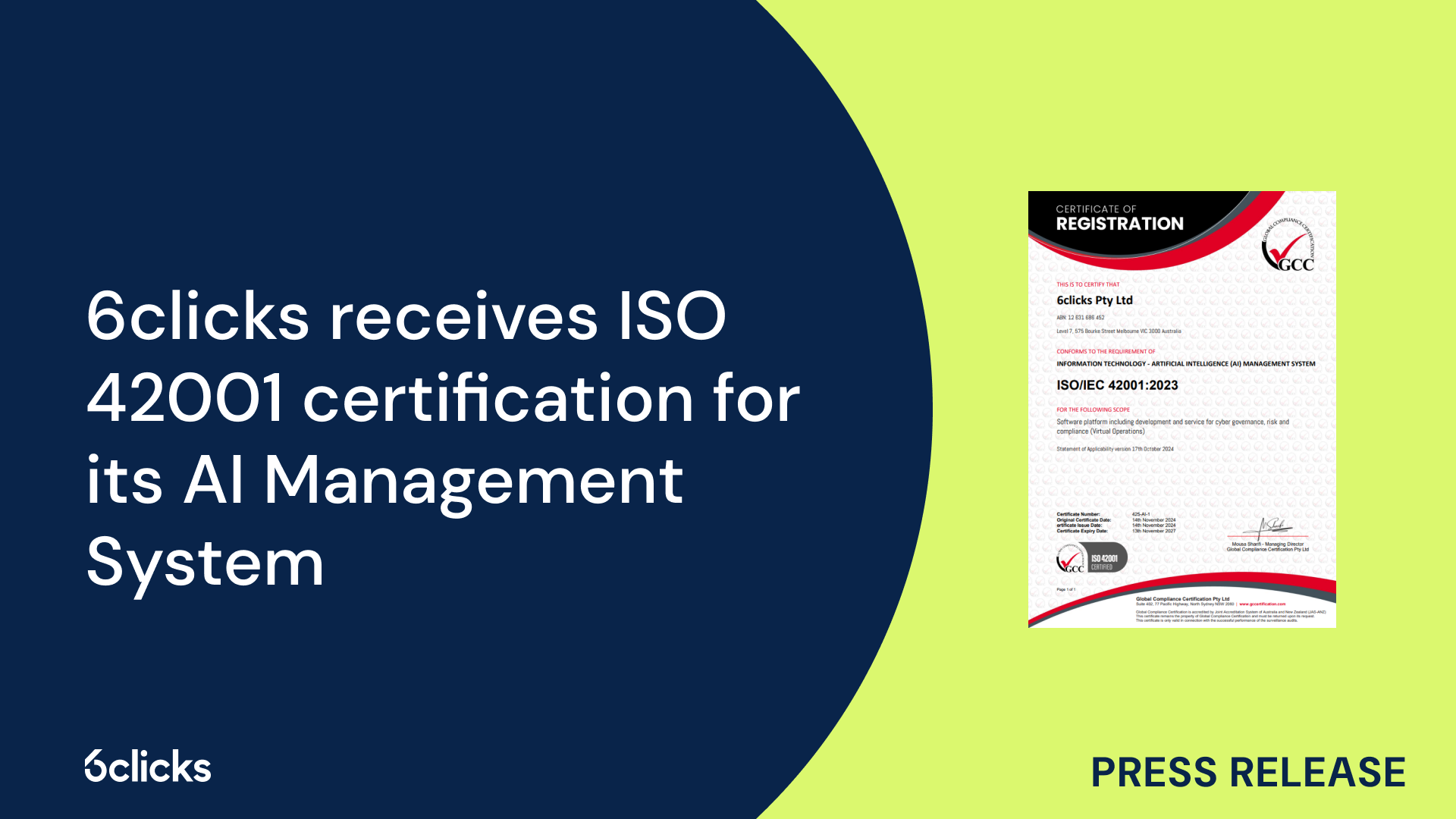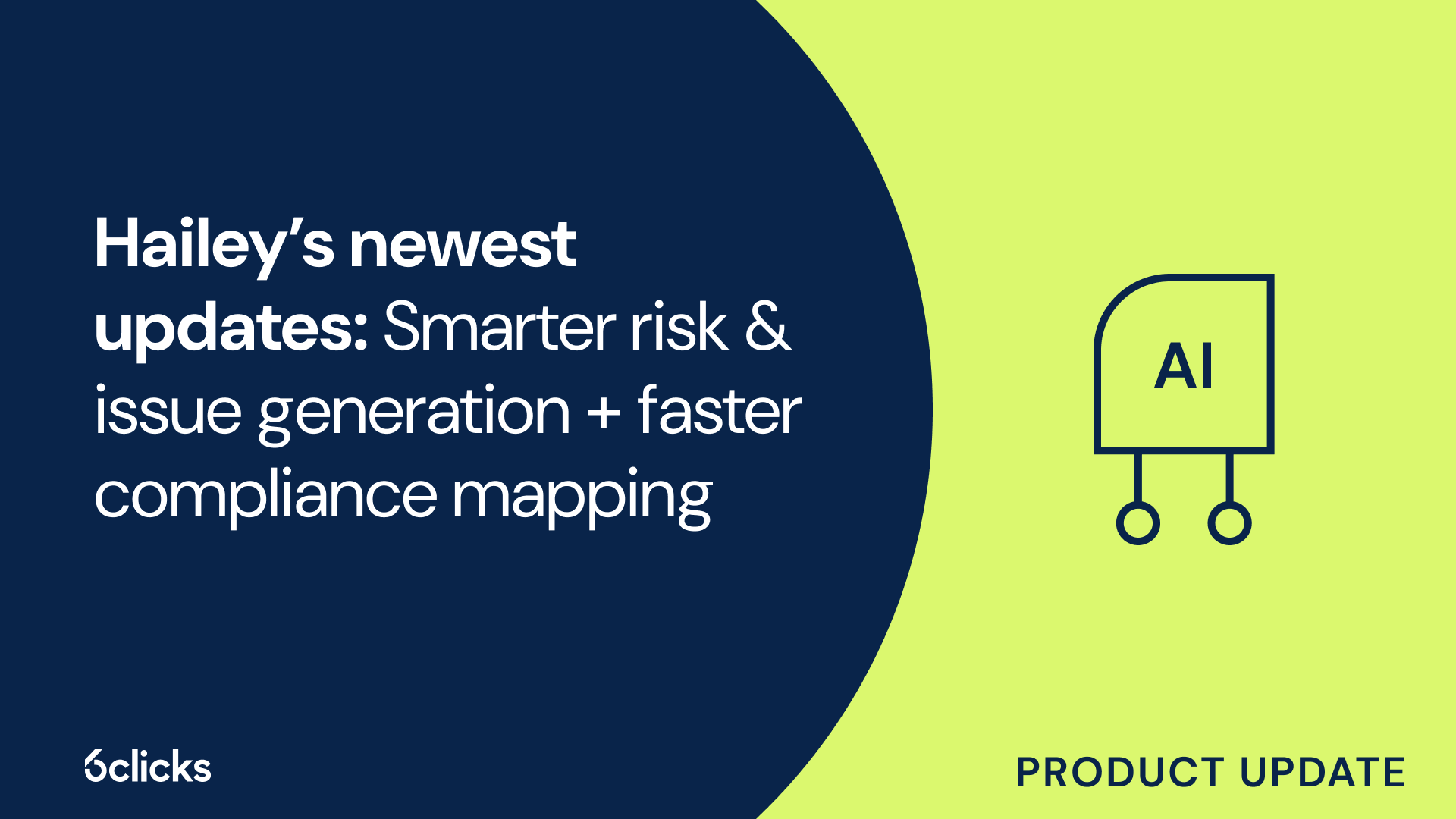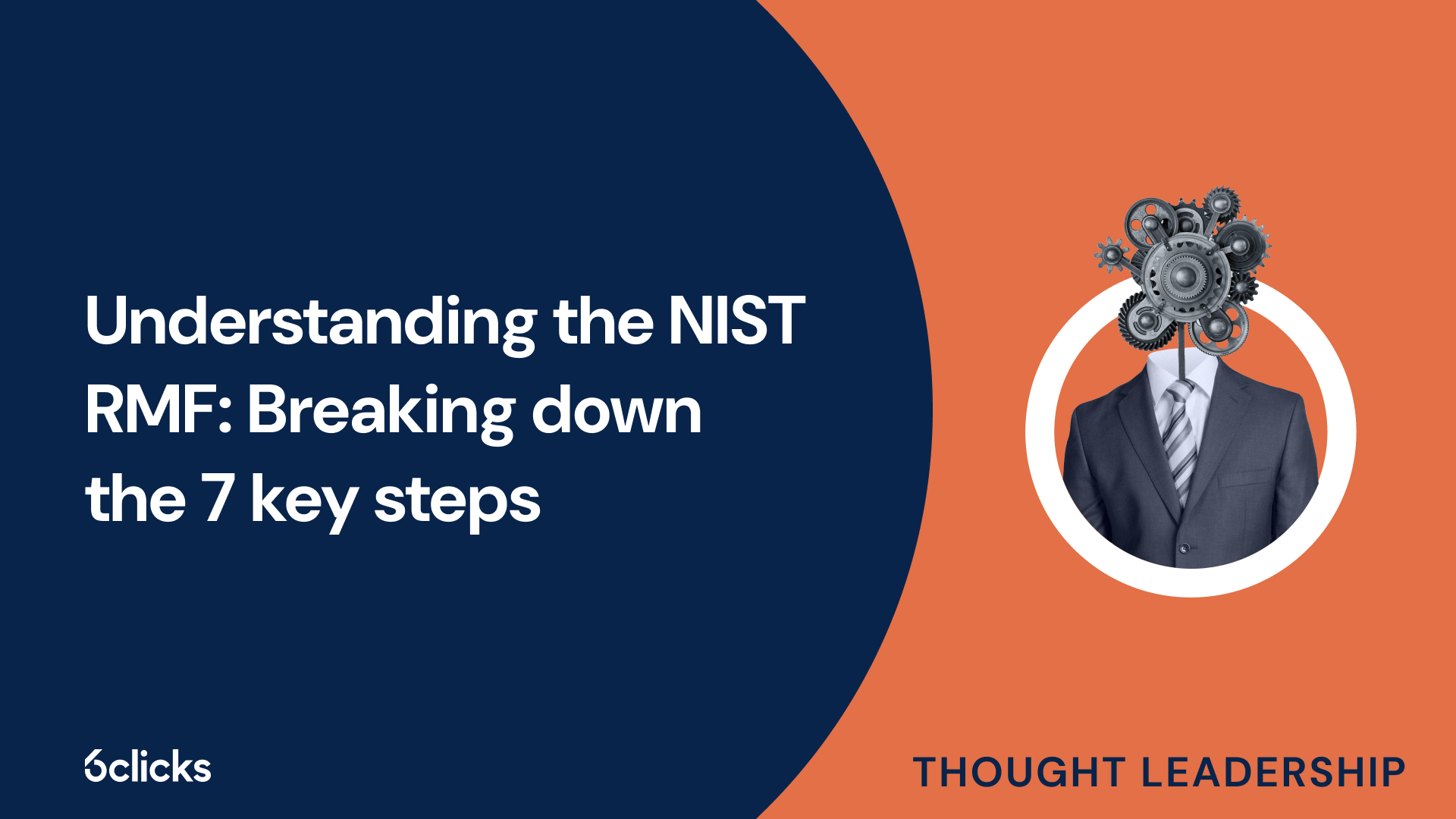What do I need to get ISO 27001 certified?
What is ISO 27001?
ISO 27001 is an international standard for information security management systems (ISMS). It provides a systematic approach to managing sensitive company information, ensuring its confidentiality, integrity, and availability. This standard outlines the requirements for establishing, implementing, operating, monitoring, reviewing, maintaining, and continually improving an ISMS within the context of an organization's overall business risks. ISO 27001 certification demonstrates that an organization has implemented appropriate security controls and measures to manage and mitigate security risks effectively. It helps organizations establish a robust security posture and provides assurance to stakeholders, including customers, employees, and business partners, about the organization's commitment to maintaining the confidentiality, integrity, and availability of information. Achieving ISO 27001 certification involves a comprehensive and rigorous certification process, including internal audits, management reviews, and external audits by accredited certification bodies, to assess an organization's compliance with the ISO/IEC 27001:2013 standard. By obtaining ISO 27001 certification, organizations can gain a competitive advantage, enhance customer trust, meet regulatory and legal requirements, protect intellectual property, and demonstrate their commitment to information security.
Benefits of ISO 27001 certification
ISO 27001 certification offers numerous benefits to organizations seeking to enhance their data security practices. Firstly, achieving this certification demonstrates an organization's commitment to safeguarding sensitive information, giving customers and partners the confidence that their data is well-protected. With data breaches becoming more prevalent, ISO 27001 certification can be a critical differentiator that helps organizations win new business and build stronger relationships with clients.
Furthermore, ISO 27001 certification enables organizations to streamline their information security processes. By implementing a systematic approach to managing security risks and implementing appropriate controls, organizations can identify vulnerabilities and proactively address them. This helps in reducing security incidents, improving incident management, and minimizing the potential damage from data breaches.
Additionally, ISO 27001 certification provides organizations with a framework for continual improvement in their security posture. Regular management reviews and internal audits ensure that security practices are regularly assessed, and appropriate corrective actions are taken. This commitment to continual improvement helps organizations stay ahead of emerging threats and adapt to evolving security challenges.
Preparing for the certification process
Preparing for the certification process involves several key steps. Firstly, organizations need to conduct a comprehensive security risk assessment to identify and evaluate potential threats and vulnerabilities. This assessment forms the basis for developing a risk treatment plan that outlines the necessary controls and measures to mitigate these risks. Organizations also need to establish a security management system that includes documented security policies, procedures, and processes aligned with the requirements of ISO 27001. Adequate security controls need to be implemented, ranging from physical security measures to software and network security. Regular internal audits should be conducted to evaluate the effectiveness of security measures and identify areas for improvement. Organizations must also ensure that they have a robust incident management process in place to effectively respond to and mitigate security incidents. Finally, organizations should consider engaging an external auditor from a certification body to conduct an independent certification audit to verify their compliance with ISO 27001 requirements. By diligently following these steps, organizations can successfully prepare for the certification process and enhance their security posture.
Understanding the requirements and objectives
Understanding the requirements and objectives is crucial before embarking on the ISO 27001 certification process. This certification, which focuses on information security management systems, requires organizations to meet specific criteria to demonstrate their ability to protect sensitive information.
One of the initial steps in this process is defining the scope of implementation, which involves determining the boundaries of the organization's operational and functional areas that will be included in the certification. This step is important as it helps in identifying the assets, processes, and systems that need to be protected.
Furthermore, it is essential to define clear objectives for the certification, such as improving security posture, mitigating security risks, complying with regulatory and legal requirements, or gaining a competitive advantage. These objectives provide a roadmap for the organization in implementing and maintaining an effective security management system.
By understanding the requirements and objectives, organizations can ensure that the certification process is aligned with their specific needs and goals. This systematic approach helps in identifying gaps in security practices, developing a risk treatment plan, implementing security controls, and establishing a culture of continual improvement.
Assessing your current security posture
Assessing your current security posture is a crucial step in the journey to becoming ISO 27001 certified. It involves conducting a thorough evaluation of your organization's existing security measures to identify any vulnerabilities or weaknesses that could pose a risk to your information assets.
During this assessment, you need to evaluate your current security policies, technologies, and employee training programs. This will help you determine whether they align with the requirements of the ISO 27001 standard and identify any gaps that need to be addressed.
Key areas to assess include physical security measures, such as access controls and surveillance systems, to ensure that your facilities are adequately protected. It is also important to evaluate network security controls, such as firewalls and intrusion detection systems, to safeguard your systems and data from unauthorized access or breaches. Additionally, assessing employee awareness and compliance with security policies is crucial, as human error or negligence can pose significant risks to your organization's information security.
By conducting a comprehensive assessment of your current security posture, you will gain valuable insights into areas that require improvement. This will enable you to develop a robust security management system and implement the necessary controls to mitigate security risks, comply with regulatory requirements, and protect your organization's valuable information assets.
Risk identification and treatment plan
Risk identification is a crucial step in the process of ISO 27001 certification. It involves systematically identifying potential risks and vulnerabilities to the information security management system (ISMS) within an organization.
To conduct a comprehensive risk identification process, both internal and external threats should be considered. Internal threats may include factors such as human error, inadequate security measures, or unauthorized access by employees. External threats can come from sources such as hackers, malware, or natural disasters.
Once the risks have been identified, a risk assessment is conducted. This involves analyzing the probability and potential impact of each risk. The probability refers to how likely the risk is to occur, while the potential impact considers the severity and consequences of the risk materializing.
After the risk assessment, security controls are assigned to mitigate the identified risks. These controls can include technical measures, such as firewalls and encryption, as well as procedural controls, such as access control policies and employee training programs.
ISO 27001 outlines four action options for responding to identified risks:
- Avoidance: If a risk is too high or cannot be mitigated effectively, the organization may choose to avoid it by eliminating or discontinuing the associated activity.
- Transfer: The organization may choose to transfer the risk to a third party through insurance or contractual agreements.
- 3. Mitigation: This involves implementing controls or measures to reduce the likelihood or impact of the risk.
- Acceptance: If the risk is deemed acceptable and the potential impact is considered manageable, the organization may choose to accept the risk without implementing specific controls.
To ensure a formal and repeatable risk assessment process, organizations need to develop a structured and documented approach. This includes planning the risk assessment, collecting and recording relevant data, analyzing the risks, and documenting the results.
By following a systematic approach to risk identification and treatment, organizations can enhance their information security management systems, protect against potential threats, and work towards ISO 27001 certification.
Developing a security management system (SMS)
Developing a security management system (SMS) in alignment with the requirements and guidelines of ISO/IEC 27001 is crucial for organizations seeking to strengthen their cybersecurity across people, processes, and technology.
The first step in developing an SMS is to identify the relevant policies needed to establish a framework for security management. These policies should cover areas such as access control, risk assessment, incident response, and information classification. These policies should be based on the organization's unique risks and requirements.
Next, organizations need to identify the technologies required to implement and support their security measures. This may include firewalls, intrusion detection systems, encryption software, and secure network configurations. The selection of technologies should be based on the organization's risk assessment and compliance requirements.
Staff training is an essential component of an effective SMS. Employees should be trained on security policies and procedures, as well as best practices for handling sensitive data and identifying potential security threats. Regular training sessions and awareness campaigns help ensure that employees understand their roles and responsibilities in maintaining the security of the organization's information.
By incorporating the requirements and guidelines outlined in ISO/IEC 27001, organizations can develop a robust SMS that addresses their specific security needs. This systematic approach to security management provides a solid foundation for identifying, assessing, and mitigating risks, ultimately enhancing the organization's overall cybersecurity posture.
Establishing security controls and policies
Establishing security controls and policies is a crucial step in achieving ISO 27001 certification. This process involves identifying and implementing the relevant ISO 27001 controls and policies for the organization based on the Statement of Applicability (SoA) and Risk Treatment Plan (RTP).
The SoA provides a comprehensive list of controls that are applicable to the organization based on their specific needs and risk assessment. These controls cover various aspects of information security, such as access control, asset management, communication security, and incident management. It is important to carefully review and select the controls that align with the organization's security requirements.
In addition to the ISO 27001 controls, organizations should also incorporate security best practices into their policies. For example, requiring multi-factor authentication for accessing sensitive systems and devices, implementing a strong password policy, and enforcing device locking when not in use.
By implementing these controls and policies, organizations can enhance their overall security posture and demonstrate compliance with the ISO 27001 standard. This not only helps protect sensitive information and mitigate security risks but also provides a competitive advantage by instilling customer confidence in the organization's ability to protect their data.
Implementing the required changes
To implement the required changes and comply with ISO 27001 requirements, organizations need to focus on addressing any identified gaps or deficiencies in their current security posture. This involves making specific changes across various aspects of their security management system (SMS).
One important change is conducting a thorough security risk assessment process. This allows organizations to identify and assess potential security risks and vulnerabilities. Based on the findings, organizations can then develop a risk treatment plan that outlines the necessary controls and measures to mitigate these risks.
Another key change is implementing a well-defined security policy. This policy should outline the organization's commitment to information security and provide clear guidelines on how to protect sensitive information. It should cover areas such as access control, incident management, asset management, and communication security.
Organizations should also establish a systematic approach to managing their security processes. This involves setting security objectives and continuously monitoring and measuring their effectiveness. Regular management reviews and internal audits should be conducted to ensure compliance with ISO 27001 requirements and identify areas for improvement.
Implementing these changes enhances the organization's security posture by providing a structured and proactive approach to managing security risks. It helps to ensure the protection of sensitive information and demonstrates a commitment to maintaining the confidentiality, integrity, and availability of data.
Testing and validation of the system
Once an organization has implemented its security management system (SMS) based on ISO 27001 requirements, it is crucial to test and validate the system to ensure its effectiveness in mitigating security risks. Thorough testing helps identify any potential vulnerabilities and weaknesses in the system, allowing organizations to strengthen their security controls and measures.
The testing and validation process typically involves several key steps. First, vulnerability assessments are conducted to identify any weaknesses or vulnerabilities in the infrastructure, systems, and applications. This helps organizations understand their current security posture and identify areas that need improvement.
Next, penetration testing is performed to simulate real-world attacks and identify any exploitable vulnerabilities. Ethical hackers attempt to gain unauthorized access or exploit vulnerabilities in the system to assess its ability to withstand such attacks. This helps organizations understand the potential impact of a security breach and implement necessary measures to prevent or mitigate such attacks.
Lastly, user acceptance testing (UAT) is conducted to ensure the usability and effectiveness of the implemented security measures. This involves engaging end-users and stakeholders to assess the system's functionality and validate its ability to meet the organization's security objectives.
Testing and validating the SMS is essential to identify any gaps or weaknesses in the security controls, ensuring that the system effectively mitigates security risks. By identifying and addressing vulnerabilities through thorough testing, organizations can improve their security posture and protect their sensitive information from potential threats.
Documentation preparation
Documentation preparation is a crucial part of the ISO 27001 certification process. To achieve certification, organizations need to have a set of mandatory documents in place. These documents help demonstrate compliance with the ISO 27001 standard and show the organization's commitment to information security.
The mandatory documents required for ISO 27001 certification include the following:
- ISMS Scope: This document defines the boundaries and applicability of the Information Security Management System (ISMS) within the organization.
- Information Security Policy: The Information Security Policy outlines the organization's commitment to information security and sets the direction for the ISMS.
- Information Security Objectives: This document establishes the specific goals and targets for information security within the organization.
- Evidence of Competence of People Working in Information Security: Organizations must provide evidence that their employees possess the necessary skills and knowledge to perform their information security duties effectively.
- Results of the Information Risk Assessment: The Information Risk Assessment identifies and assesses the risks to the confidentiality, integrity, and availability of information within the organization.
By ensuring that these mandatory documents are prepared and implemented effectively, organizations can demonstrate their commitment to information security and increase their chances of achieving ISO 27001 certification.
Writing a statement of applicability (SoA)
Writing a statement of applicability (SoA) is a crucial step in the ISO 27001 certification process. The SoA is a mandatory report that outlines the Annex A controls included in the scope of the organization's Information Security Management System (ISMS).
To create an effective SoA, organizations need to follow a systematic approach. Here are the steps involved in writing a comprehensive SoA:
- Define the ISMS Scope: Clearly define the boundaries and applicability of the ISMS within the organization. This will determine which controls should be included in the SoA.
- Evaluate Controls: Assess all the Annex A controls and determine which ones fall within the scope of the organization's ISMS. Consider factors such as legal requirements, regulatory obligations, and contractual agreements.
- Justify Inclusion/Exclusion: For each control, provide a justification for its inclusion or exclusion in the SoA. Consider the organization's risk assessment, security objectives, and the effectiveness of existing controls.
- Provide Implementation Status: Indicate the implementation status of each control. This could range from fully implemented to not applicable. Include any relevant evidence or documentation to support the status.
- Review and Approve: The SoA should be reviewed by senior management to ensure accuracy and alignment with the organization's security practices and objectives.
By following these steps, organizations can create a well-documented and justified SoA that meets the requirements of ISO 27001 certification. The SoA demonstrates the organization's commitment to information security and provides a roadmap for implementing and maintaining the necessary controls for ISMS.
Creating an internal audit programme
1. ISMS Design Review: This stage involves reviewing the design of the Information Security Management System (ISMS) to ensure its effectiveness and compliance with the ISO 27001 standard. The purpose is to identify any gaps or areas that need improvement in the design of the ISMS.
Activities to Conduct: Review the documented security policies, procedures, and risk assessment process. Assess the alignment of the ISMS with the organization's objectives and regulatory requirements. Identify any areas for improvement and develop an action plan.
2. Certification Audit: This is the formal audit conducted by an accredited certification body to assess the organization's ISMS against the requirements of ISO 27001. The purpose is to determine whether the ISMS meets the standard's requirements for certification.
Activities to Conduct: Prepare the necessary documentation and evidence to demonstrate compliance with ISO 27001. Coordinate with the certification body for the audit schedule. Participate in the on-site audit, which includes reviewing documents, interviewing key personnel, and assessing the implementation of controls.
3. Surveillance Audits: These are periodic audits conducted by the certification body to ensure the ongoing compliance of the ISMS with ISO 27001. The purpose is to monitor and verify the organization's adherence to the standard.
Activities to Conduct: Implement a regular audit schedule based on the certification body's requirements. Conduct internal audits to ensure ongoing compliance. Address any non-conformities or areas for improvement identified during the surveillance audits.
4. Recertification Audit: This is a comprehensive audit conducted by the certification body at the end of the certification cycle to renew the ISO 27001 certification. The purpose is to assess the continued effectiveness and improvement of the ISMS.
Activities to Conduct: Prepare for the recertification audit by reviewing the ISMS and addressing any non-conformities or improvement actions from the previous cycle. Coordinate with the certification body for the audit schedule. Participate in the on-site audit, similar to the initial certification audit.
By following these stages and conducting the necessary activities, organizations can establish a robust internal audit programme for ISO 27001 certification. This programme ensures the ongoing effectiveness, improvement, and compliance of the ISMS with the ISO 27001 standard.
Seeking certification from an accredited body
Seeking certification from an accredited body is a crucial step for organizations looking to enhance their information security practices and demonstrate their commitment to protecting valuable assets. By achieving ISO 27001 certification, organizations can establish a robust Information Security Management System (ISMS) that aligns with internationally recognized standards and best practices. This certification process involves several key activities, including an ISMS design review to identify areas for improvement and alignment with organizational objectives and regulatory requirements. The formal certification audit, conducted by an accredited certification body, evaluates the organization's ISMS against the requirements of ISO 27001. Ongoing surveillance audits are also conducted to monitor compliance and address any non-conformities or areas for improvement. Finally, a recertification audit is conducted to assess the continued effectiveness and improvement of the ISMS. Through this certification process, organizations can demonstrate their commitment to information security and gain a competitive advantage in the marketplace.
Choosing an accredited certification body/auditor
When seeking ISO 27001 certification, it is crucial to choose an accredited certification body/auditor that has the necessary expertise, reputation, accreditation, and experience to conduct a thorough certification audit. The certification body/auditor you select should align with your organization's industry and specific needs.
First and foremost, make sure the certification body/auditor is accredited by a recognized accreditation body. Accreditation ensures that the certification body/auditor operates according to internationally accepted standards and practices. This ensures that the certification audit is conducted impartially and competently.
Consider the expertise and experience of the certification body/auditor. They should have a solid understanding of ISO/IEC 27001 and related security management standards. Look for a certification body/auditor that has a track record of successfully certifying organizations in your industry.
Reputation is also a key factor to consider. Talk to other organizations that have been certified by the certification body/auditor to gauge their satisfaction with the certification process. Look for reviews and testimonials to assess their reputation within the industry.
Additionally, evaluating factors such as cost, location, availability, and customer support is important. Consider the certification body/auditor's pricing structure and ensure it fits within your budget. Assess their availability and whether they can accommodate your desired certification timeline. Look for a certification body/auditor that provides prompt and responsive customer support.
By carefully evaluating and selecting an accredited certification body/auditor that meets your organization's specific needs, you can ensure a successful ISO 27001 certification process.
Related eBooks & Expert guides
- Understanding ISO 27001
- What is the ISO 27001 standard?
- ISO 27001 vs ISO 27002
- Who needs to be ISO 27001 certified?
- Why is ISO 27001 so important?
- GRC Buying Guide
- GRC Buying Guide
Blogs & Thought Leadership
- ISO 27001 vs PCI-DSS
- ISO 27001 vs NIST CSF
- ISO 27001 vs ASD Essential 8
- ISO 27001 vs SOC 2
- ISO 27001 vs NIST SP 800-53







